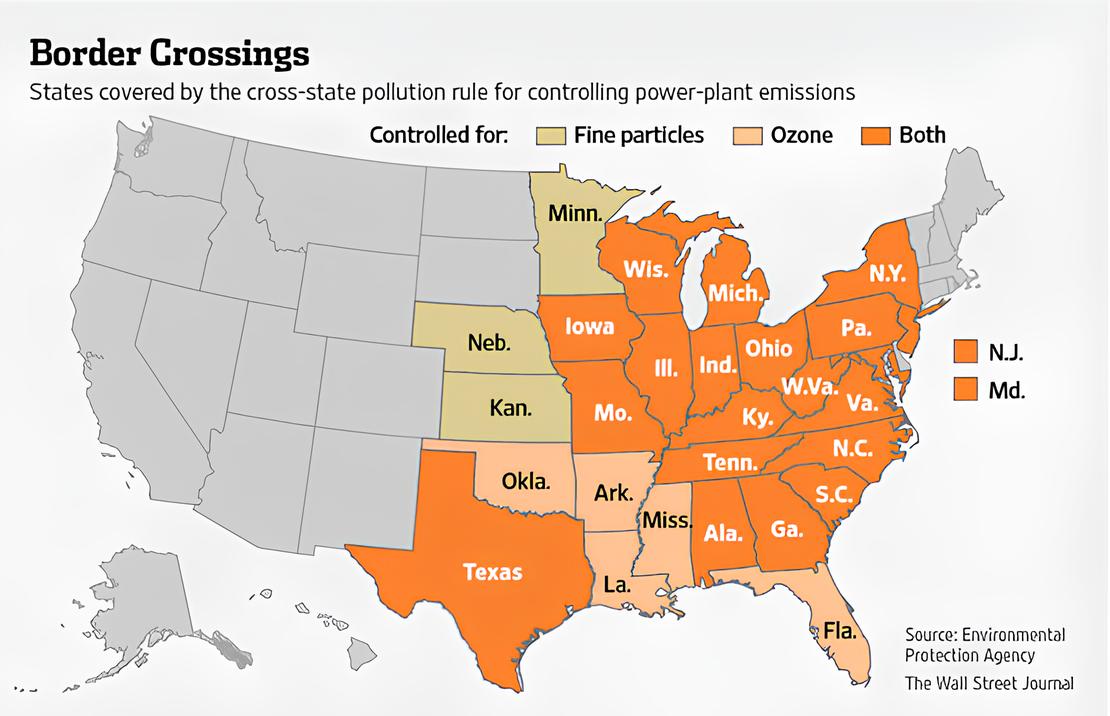Cross State Air Pollution Rule (CSAPR)
CSAPR Compliance Solutions
The Cross-State Air Pollution Rule (CSAPR) is a regulation by the United States Environmental Protection Agency (EPA) designed to tackle the issue of air pollution traveling between different states. This rule mandates that 28 states in the eastern part of the country must cut down on the release of sulfur dioxide (SO2) and nitrogen oxides (NOx) from their power plants. These emissions have the potential to add to ground-level ozone and fine particulate matter (PM2.5) pollution in states located downwind.
Contact our Environmental Commodities team to learn how our CSAPR compliance solutions can help your business unlock value while supporting the global transition to a more sustainable future.

Goals of the CSAPR
The CSAPR aims to achieve two primary goals:
Enhance Air Quality in Downwind States: CSAPR is crafted to assist downwind states in reaching and maintaining compliance with national air quality standards for ozone and PM2.5, contributing to overall improved air quality.
Mitigate Health Impacts of Air Pollution: Addressing the emissions of pollutants like ozone and PM2.5, the CSAPR seeks to reduce health-related issues such as respiratory problems, heart disease, and cancer associated with air pollution.
Functioning of the CSAPR
The CSAPR operates by compelling power plants to curtail their emissions of sulfur dioxide (SO2) and nitrogen oxides (NOx). To meet these requirements, power plants can employ various strategies, including:
Installation of Pollution Control Equipment: Utilizing advanced equipment designed to capture and remove SO2 and NOx from power plant emissions.
Transitioning to Cleaner Fuels: Power plants have the option to switch from coal to cleaner-burning fuels, such as natural gas.
Participation in Emissions Trading Programs: The CSAPR facilitates emissions trading programs, enabling power plants to buy and sell emissions allowances. This flexibility allows power plants to fulfill their emissions reduction obligations in a cost-effective manner.
Benefits of the CSAPR
The CSAPR brings forth several advantages, including:
Enhanced Air Quality: Demonstrating effectiveness in reducing ozone and PM2.5 pollution, the CSAPR contributes significantly to improved air quality in downwind states.
Health Impact Reduction: By lowering exposure to unhealthy levels of ozone and PM2.5, the CSAPR has played a pivotal role in diminishing respiratory problems, lowering the incidence of heart attacks, and reducing cancer-related deaths.
Economic Upsides: The CSAPR has not only made strides in environmental health but has also yielded economic benefits, fostering increased tourism and cutting down on healthcare costs.
Related Content

Carbon Offsets
A carbon offset is a transferrable credit certified by governments or certifying bodies to represent an emission reduction of one metric tonne of CO2, or an equivalent amount of other GHGs.

Carbon Markets
Global carbon markets are broken down into two major market types; voluntary carbon markets (also known as VCMs) and compliance carbon markets, which vary by jurisdiction.

Carbon Trading
Carbon Trading is a market-based approach to slowing global warming. Supply and demand set the commodity price on carbon credits, offsets, and renewable energy certificates (RECs).
Environmental Commodities
Learn more about our carbon credit, carbon offset and renewable energy certificate (REC) programs & solutions for compliance and voluntary carbon markets around the world.

Carbon Pricing
A carbon price typically appears as a carbon tax or in emissions trading, with the main policy instrument being an Emissions Trading System (ETS), also known as Cap-and-Trade (CAT) program.
